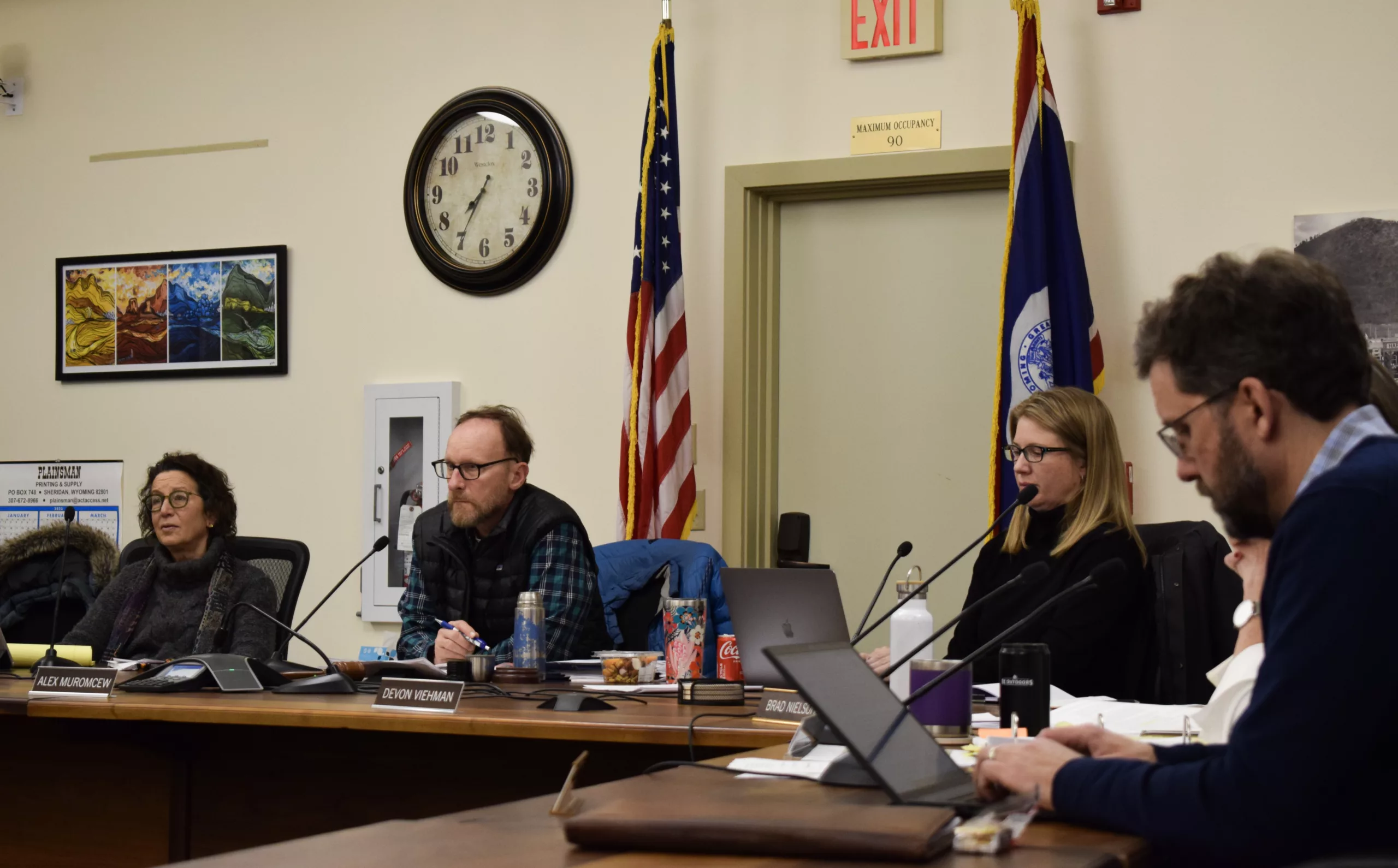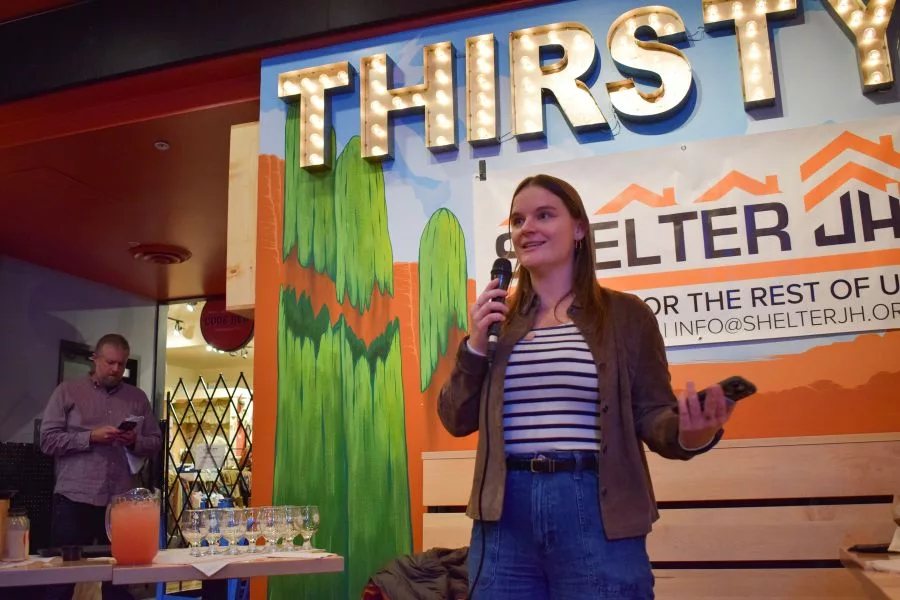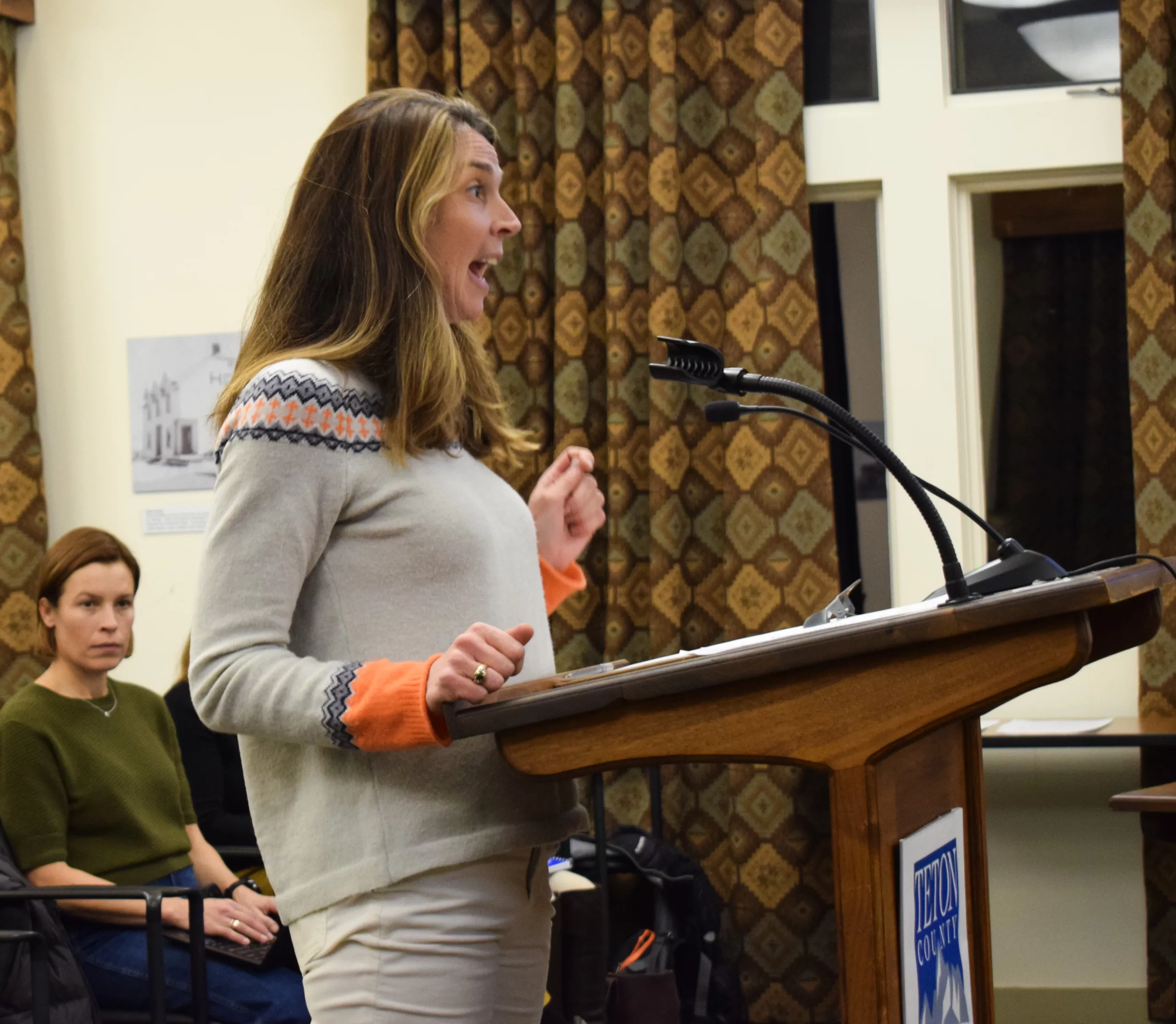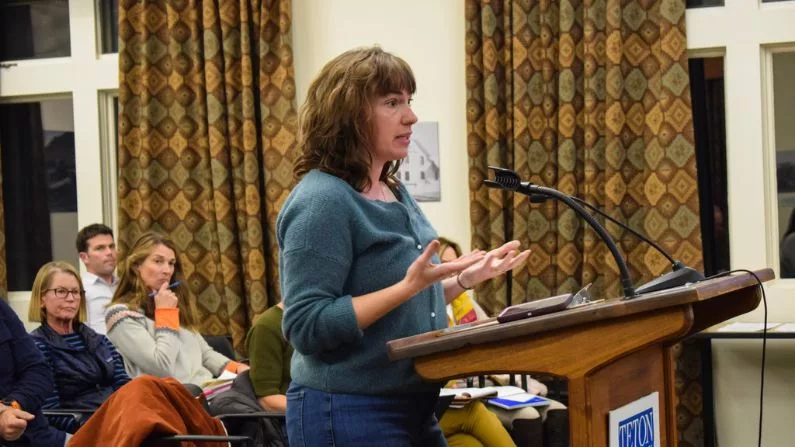Iván Jiménez said he moved seven times in one year before finding a rental in East Jackson. And Moose resident Whitney Oppenhuizen said she watches friends move away year after year.
“How do we keep investing in this community that we may not be able to retire in?” Oppenhuizen asked, her voice catching.
They are part of a group of housing advocates urging Teton County officials to prioritize building affordable units in Northern South Park.
Many say they see the development of at least 1,200 homes south of town as a beacon of hope in the region’s affordability crisis — if it’s done with some guardrails in place.
“We currently are sitting on a gold mine,” Anna Kerr said to planning commissioners Monday night.
Kerr was one of about 10 members of housing advocacy group Shelter JH at the meeting, making up half the audience.
“If done correctly, the people who live, work, play and pour their hearts into this community might be given a fighting chance to stay,” Kerr said.
One by one, members of the group walked up to the podium, sharing their own struggles to find housing. They called on commissioners to ensure affordable homes are built at the same time as free-market ones, integrated together and “shovel ready” with infrastructure like water and sewer hookups.
But commissioners are also tasked with keeping regulations flexible to incentivize the Northern South Park landowners to opt in to the plan. The landowners have said that extra restrictions could slow down the process and make the deal financially unfeasible.

The Teton County Planning Commission at a Monday meeting on Northern South Park. The board is in the process of reviewing a draft zoning plan for the land — a step toward breaking ground. (Hanna Merzbach/KHOL)
Calls for affordability
Plans for the development on more than 200 acres off High School Road have been in the works for several years.
After years of public discussions and private negotiations, commissioners are currently weighing in on much-anticipated zoning proposals, which start to lay out the process for building dense multi-story affordable homes and larger, pricier ones.
April Norton, the director of Jackson/Teton County Affordable Housing, has said in a letter that affordable workforce housing should be built at least as fast as market homes, and that they should be spatially integrated.
If this doesn’t happen, “This likely will result in notable differences in locations and availability of housing,” Norton wrote.
In comments, county planning staff wrote that while having different developers means land will be inherently segregated, “the use of ‘blocks’ may help to better integrate these areas within the site.”
Staff also wrote that the Teton County Board of Commissioners decided early this year not to link the construction of affordable units with market ones and leave specific timing up to the developers, but the planning commission didn’t have time to weigh in on the topic at the Monday meeting.
But Rafter J resident Libby Cornelssen said affordable housing should be a top priority when planning for Northern South Park.
“Because deed-restricted and income-linked housing will allow for the families that work hard in our community every day to live close to their children’s schools, health care, transportation and more,” Cornelssen said.
Kelsey Yarzab, the policy chair at Shelter JH, told planning commissioners that she’s 25 and already feels like her time is running out in Teton County.

Kelsey Yarzab speaks at a recent Shelter JH and Teton Democrats event at Code Red, urging attendees to speak out about Northern South Park. (Hanna Merzbach/KHOL)
“It feels like we’re facing a brick wall when we look at taking our next steps in life,” Yarzab said. “I want to raise a family here, grow my career here and continue to be an active member of this community.”
Yarzab said she wants to see an equitable, sustainable neighborhood built in a timely manner. To her, integrating affordable and pricier homes together is paramount, along with requiring landowners to extend infrastructure to the deed-restricted lots.
“Without a real change, a real chance at socioeconomic mobility,” Yarzab said, “our community will continue to suffer.”
Landowners need to opt in
Deputy county attorney Abigail Moore reminded commissioners Monday that keeping regulations flexible means less risk for developers.
“It’s, again, trying to make sure that we strike that balance of getting these houses built,” Moore said. “Not just having regs [regulations] that everyone’s happy with because it guarantees something … and then the regs sit on the shelf and collect dust.”
The Northern South Park land is owned by two multi-generational families in the region: the Gills and the Lockharts.
The Gills have already said they intend to gift a portion of their land to local affordable housing nonprofits Habitat for Humanity and the Jackson Hole Community Housing Trust — in exchange for the ability to build more free-market homes.
The upzone means they could build between 1,200 and 1,682 units, as long as 40% of them are deed-restricted affordable housing and 30% of them are workforce.
“With land in front of us, we will be developing affordable housing,” Habitat for Humanity board member Patty Lummis said to commissioners in response to community concerns. “The land won’t just be sitting there with no affordable homes going up on it.”
Community housing trust leader Anne Cresswell followed, saying the development is “audacious” and that the various development partners need “independence” when it comes to when they build their units.

Anne Cresswell, executive director of Jackson Hole Community Housing Trust, urges the planning commission to not put additional requirements on landowners. (Hanna Merzbach/KHOL)
“Please don’t gamble with this opportunity at hand,” Cresswell urged commissioners.
In a mid-November meeting, Gill family representative Amberley Baker also argued against housing advocates’ call for tying the production of affordable units to free-market ones. She said the family is on the “razor’s edge” of opting into the plan, but such a move could hurt them financially.
“It is a poison pill that will kill housing in Northern South Park,” Baker said.
On Monday night, in addition to hearing from concerned residents, the board approved conducting a traffic impact study, as many residents say they are worried about potential effects to High School Road and South Park Loop.
Members also approved having certain environmental protections, such as discouraging vegetation that attracts wildlife and setting development back from streams.
The planning commission will meet again on Dec. 11 to discuss other parts of the Northern South Park project, including affordable housing.






